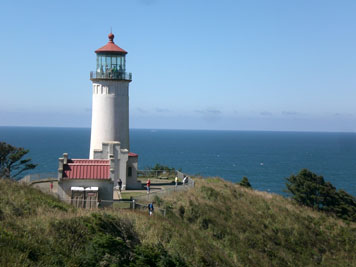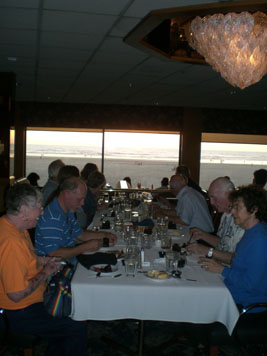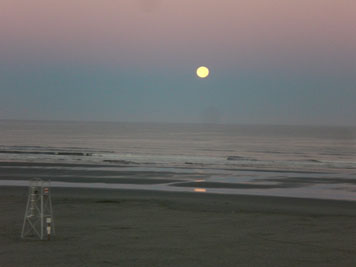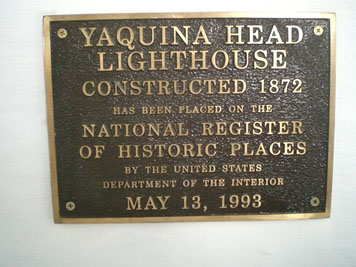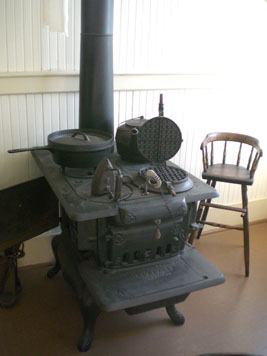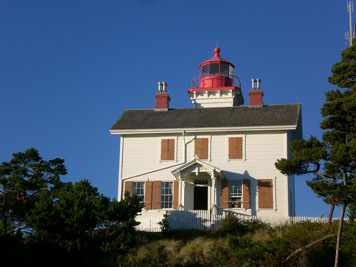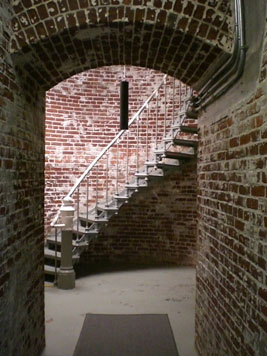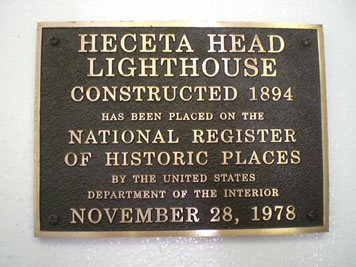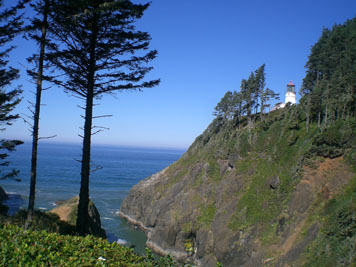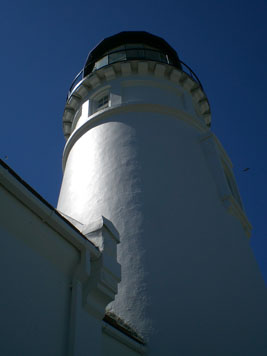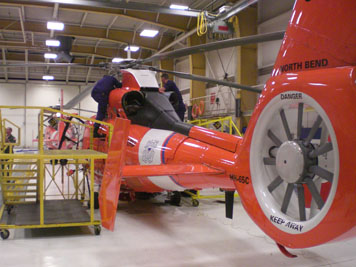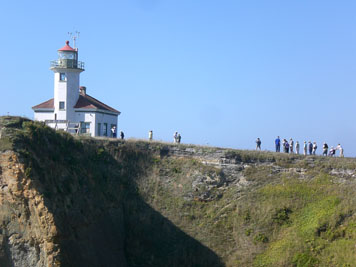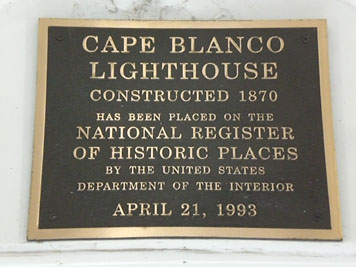Lighthouse Tour of Oregon 2007
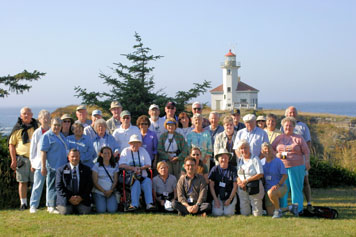 Groug photo at Cape Arago Lighthouse in Coos Bay
Groug photo at Cape Arago Lighthouse in Coos Bay
Photo by Anne Camp
 Cape Disappointment Lighthouse in Ilwaco
Cape Disappointment Lighthouse in Ilwaco
 Lens at Cape Disappointment Lighthouse
Lens at Cape Disappointment Lighthouse
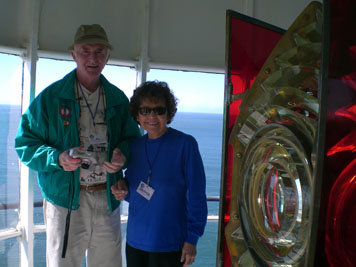 Ed & Branca McDonald at lens of Cape Disappointment Lighthouse
Ed & Branca McDonald at lens of Cape Disappointment Lighthouse
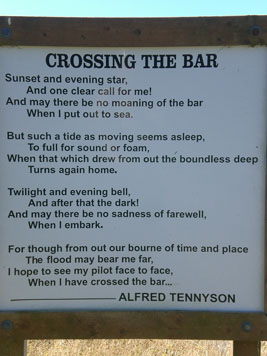 Alfred Tennyson poem on display at Cape Disappointment Lighthouse
Alfred Tennyson poem on display at Cape Disappointment Lighthouse
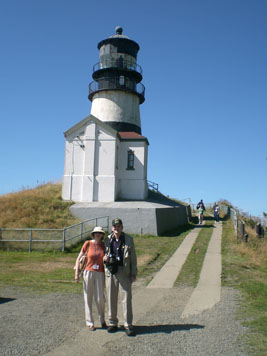 Dick & Dorothy Mattson at Cape Disappointment Lighthouse
Dick & Dorothy Mattson at Cape Disappointment Lighthouse
 View of Pacific Ocean from trail to Cape Disappointment Lighthouse
View of Pacific Ocean from trail to Cape Disappointment Lighthouse
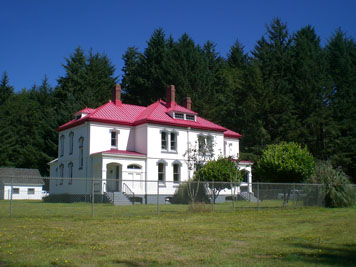 Keeper's House at North Head Lighthouse in Ilwaco
Keeper's House at North Head Lighthouse in Ilwaco
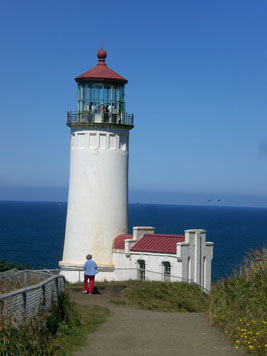 North Head Lighthouse in Ilwaco
North Head Lighthouse in Ilwaco
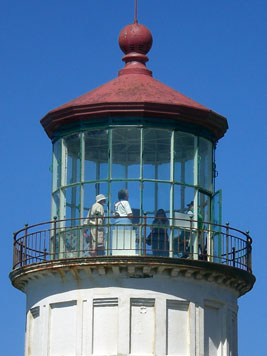 Lantern room of North Head Lighthouse
Lantern room of North Head Lighthouse
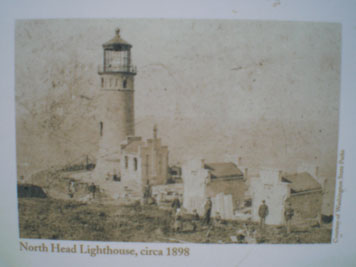 Old postcard of North Head Lighthouse
Old postcard of North Head Lighthouse
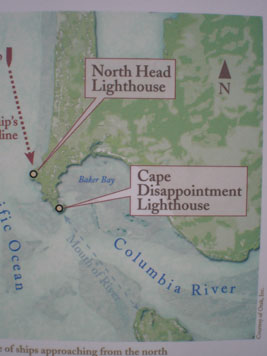 Map of mouth of the Columbia River
Map of mouth of the Columbia River
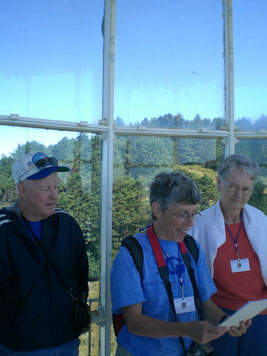 Society members in the lantern room of Cape Disappointment Lighthouse
Society members in the lantern room of Cape Disappointment Lighthouse
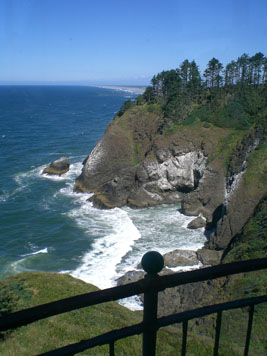 view from North Head Lighthouse
view from North Head Lighthouse
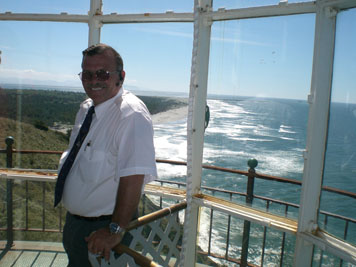 Bus Driver Lionel in lantern room of North Head Lighthouse
Bus Driver Lionel in lantern room of North Head Lighthouse
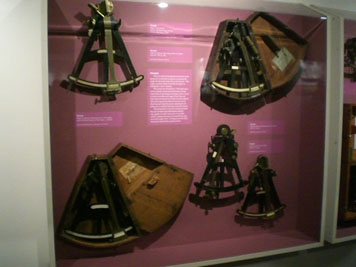 Columbia River Maritime Museum in Astoria
Columbia River Maritime Museum in Astoria
Variety of Sextants which are instruments generally used to measure the altitude of a celestial object above the horizon
 Columbia River Maritime Museum in Astoria
Columbia River Maritime Museum in Astoria
The Butterfield Azimuth Chronometer
This device, invented by Horace S. Butterfield, prominent Portland jeweler, was designed to automatically show the momentary azimuths, or bearings, of celestial objects under observation, continually throughout the year by means of a clockwork mechanism that allowed the device to track these objects. Setting the device required only a brief viewing of the sun, moon, prominent star or planet. Observation would reveal the position of a ship at sea, or the latitude and longitude. It also made it possible to determine local time as well as true direction. Similar devices are used in astronomy, which allow telescopes to automatically track celestial objects along their transit of the night sky.
 Columbia River Maritime Museum in Astoria
Columbia River Maritime Museum in Astoria
Photo of the wreck of the Admiral Benson
The nearly 100 foot long Pacific Steamship Company liner, S.S. Admiral Benson, was inbound from San Francisco with 39 passengers and a crew of 65, when it stranded on the sands at the entrance to the Columbia on February 15, 1930. Passengers and crew and the orchestra were removed by lifeboats from Point Adams and Cape Disappointment Coast Guard Stations. At first it appeared that the vessel could be easily re-floated, but after two day of increasing wind and seas the ship began to break apart.
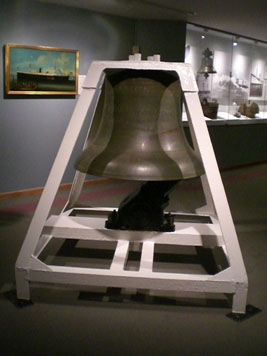 Columbia River Maritime Museum in Astoria
Columbia River Maritime Museum in Astoria
Fog bell
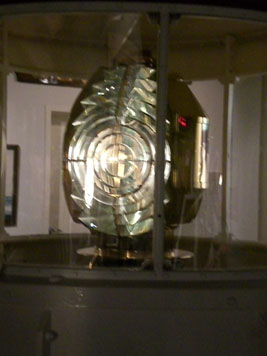 Columbia River Maritime Museum in Astoria
Columbia River Maritime Museum in Astoria
Fresnel Lens
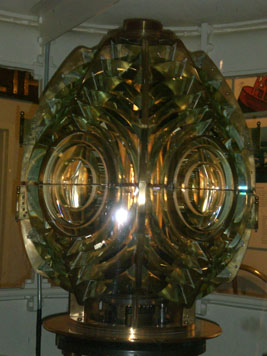 Columbia River Maritime Museum in Astoria
Columbia River Maritime Museum in Astoria
Fresnel Lens
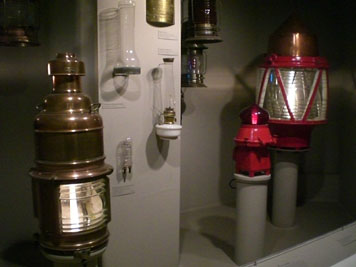 Columbia River Maritime Museum in Astoria
Columbia River Maritime Museum in Astoria
 Columbia River Lightship in Astoria
Columbia River Lightship in Astoria
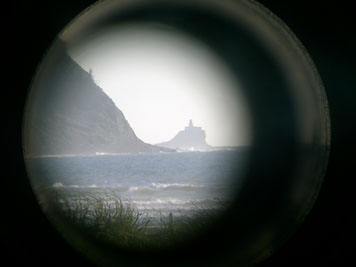 Tillamook Rock Lighthouse through view finder in Seaside
Tillamook Rock Lighthouse through view finder in Seaside
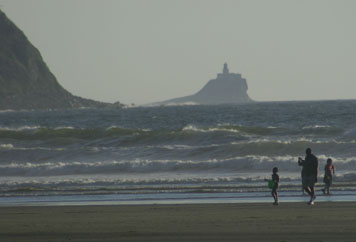 Tillamook Rock Lighthouse
Tillamook Rock Lighthouse
Photo by Anne Camp
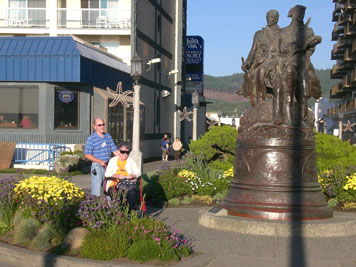 Bill Gray & Nancy Rau in Seaside
Bill Gray & Nancy Rau in Seaside
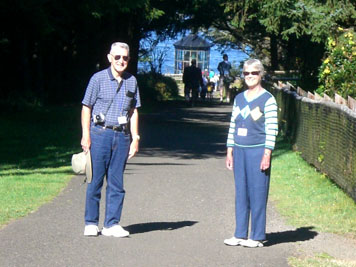 Dick & Charlean Wakefield on trail to Cape Meares Lighthouse
Dick & Charlean Wakefield on trail to Cape Meares Lighthouse
 View of Cape Meares Lighthouse
View of Cape Meares Lighthouse
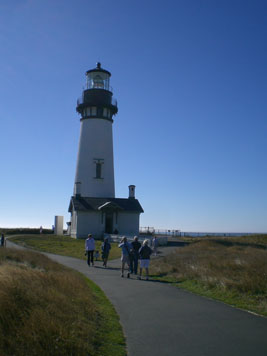 Yaquina Head Lighthouse in Newport
Yaquina Head Lighthouse in Newport
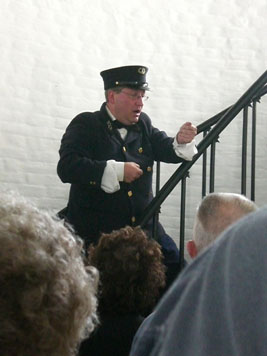 Volunteer Ron Moller at Yaquina Head Lighthouse
Volunteer Ron Moller at Yaquina Head Lighthouse
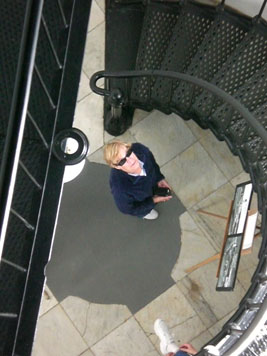 Dolores Thacher looking up at Yaquina Head Lighthouse
Dolores Thacher looking up at Yaquina Head Lighthouse
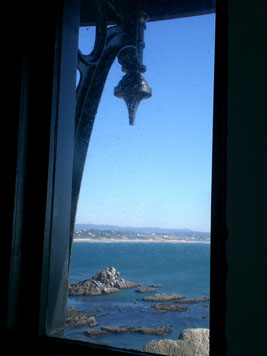 View from Yaquina Head Lighthouse
View from Yaquina Head Lighthouse
 Lens at Yaquina Head Lighthouse
Lens at Yaquina Head Lighthouse
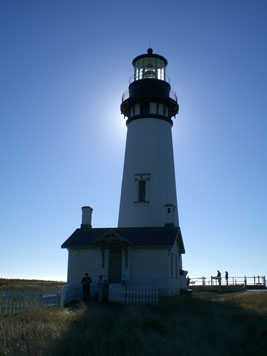 Yaquina Head Lighthouse in Newport
Yaquina Head Lighthouse in Newport
 Group gathering at Yaquina Bay Lighthouse in Newport
Group gathering at Yaquina Bay Lighthouse in Newport
 Yaquina Bay Lighthouse in Newport
Yaquina Bay Lighthouse in Newport
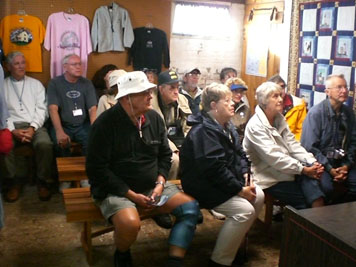 Group watching video in Yaquina Bay Lighthouse
Group watching video in Yaquina Bay Lighthouse
 Distant view of Yaquina Head Lighthouse
Distant view of Yaquina Head Lighthouse
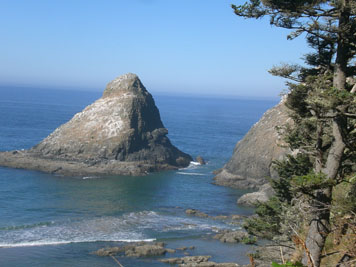 Heceta Head State Park in Florence
Heceta Head State Park in Florence
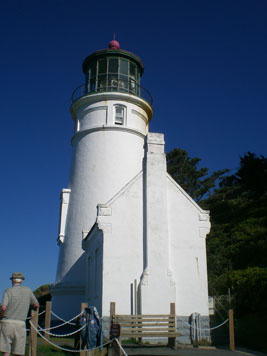 Heceta Head Lighthouse in Florence
Heceta Head Lighthouse in Florence
 Heceta Head Lighthouse
Heceta Head Lighthouse
Photo by Larry Lacy
 Umpqua River Lighthouse in Winchester Bay
Umpqua River Lighthouse in Winchester Bay
 Umpqua River Lighthouse Marker
Umpqua River Lighthouse Marker
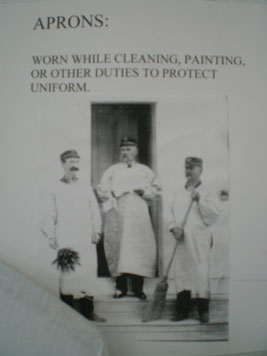 Picture of lightkeepers at Umpqua River Lighthouse
Picture of lightkeepers at Umpqua River Lighthouse
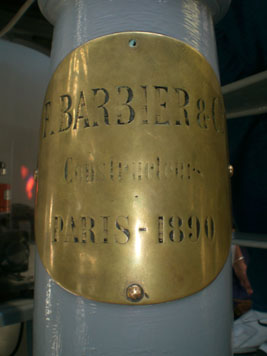 Lens at Umpqua River Lighthouse
Lens at Umpqua River Lighthouse
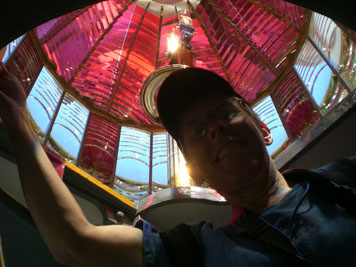 Lens at Umpqua River Lighthouse
Lens at Umpqua River Lighthouse
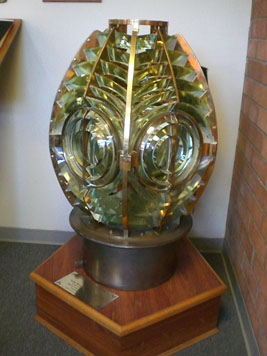 Original 4th order fresnel lens from Cape Arago Lighthouse on display at USCG North Bend Air Station
Original 4th order fresnel lens from Cape Arago Lighthouse on display at USCG North Bend Air Station
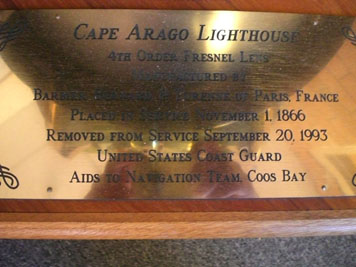 Fresnel lens from Cape Arago lighthouse
Fresnel lens from Cape Arago lighthouse
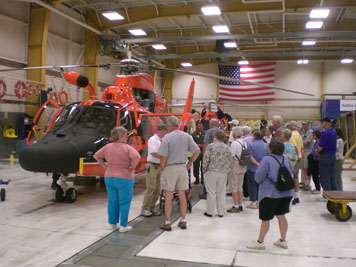 Tour of USCG Air Station North Bend
Tour of USCG Air Station North Bend
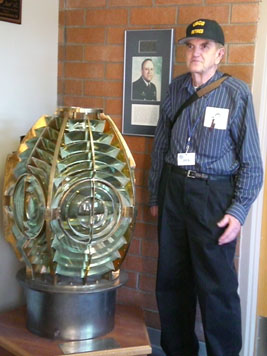 Dick Mattson standing next to the original fresnel lens from Cape Arago Lighthouse on display at the USCG Air Station North Bend
Dick Mattson standing next to the original fresnel lens from Cape Arago Lighthouse on display at the USCG Air Station North Bend
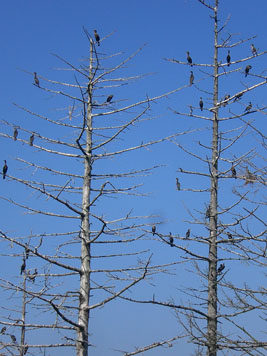 Trees full of Ospreys'
Trees full of Ospreys'
As seen from the Cape Arago Lighthouse
One of the largest birds of prey in North America, the Osprey eats almost exclusively fish. It is one of the most widespread birds in the world, found on all continents except Antarctica.
 Footbridge and Cape Arago Lighthouse in Charleston
Footbridge and Cape Arago Lighthouse in Charleston
Photo by Larry Lacy
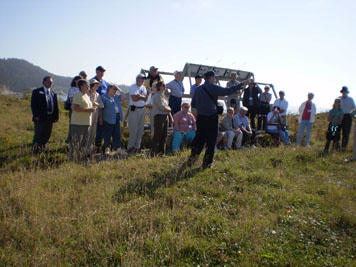 Group preparing for tour of Cape Arago Lighthouse
Group preparing for tour of Cape Arago Lighthouse
Photo by Larry Lacy
 Osprey nesting in the trees at the Cape Arago Lighthouse
Osprey nesting in the trees at the Cape Arago Lighthouse
The Osprey is a fish-eating specialist, with live fish accounting for about 99% of its diet. Barbed pads on the soles of its feet help it grip slippery fish. When an Osprey takes a large fish to its nest, it carries the fish headfirst to make it as aerodynamic as possible
Photo by Anne Camp
 Cape Blanco Lighthouse in Port Orford
Cape Blanco Lighthouse in Port Orford
 Historic picture of Cape Blanco Lighthouse
Historic picture of Cape Blanco Lighthouse
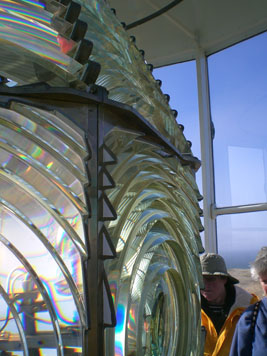 Lens at Cape Blanco Lighthouse
Lens at Cape Blanco Lighthouse
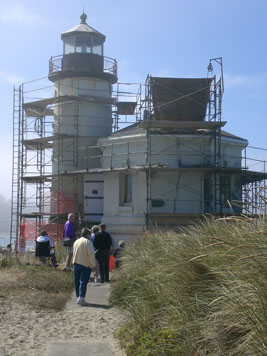 Coquille River (Bandon) Lighthouse in Bandon
Coquille River (Bandon) Lighthouse in Bandon

